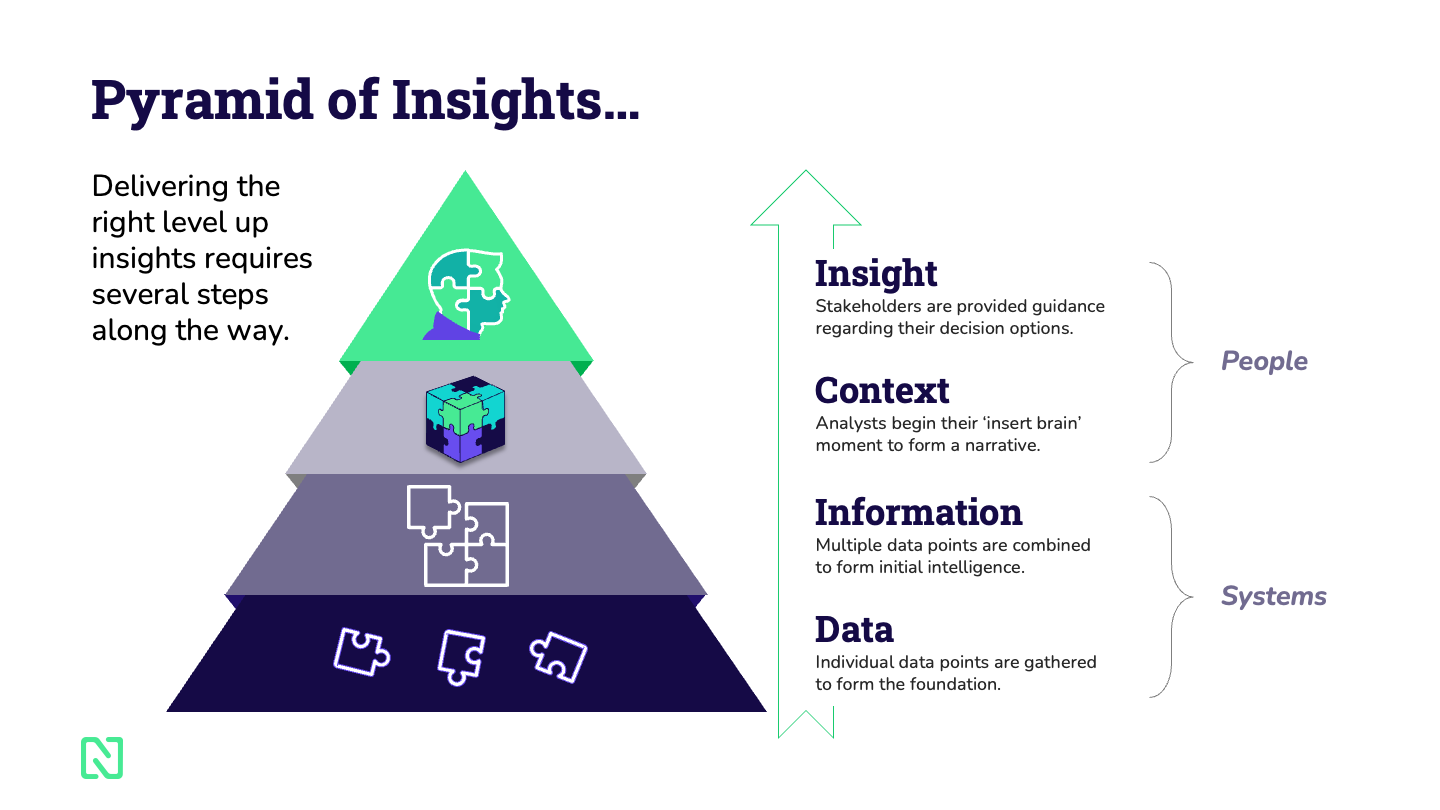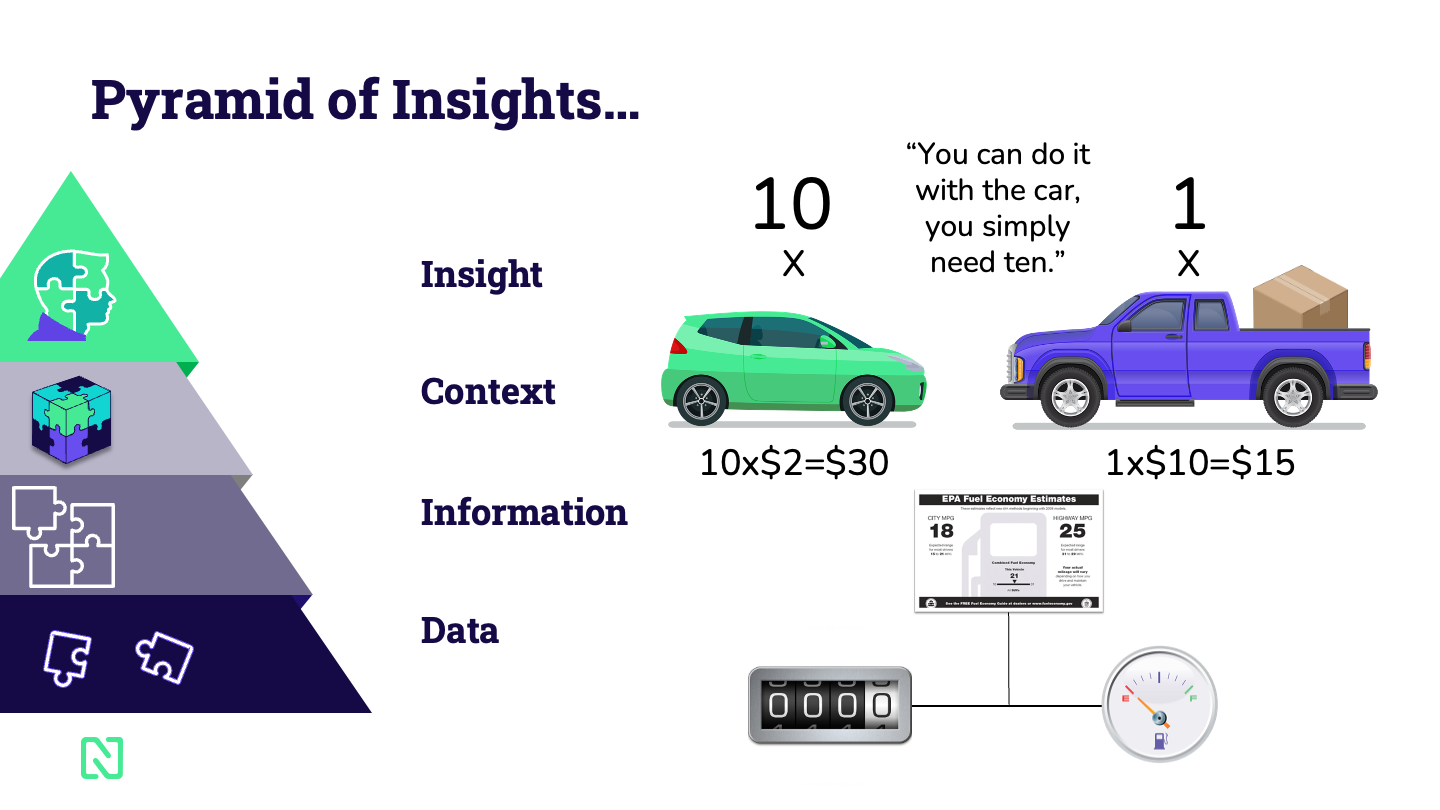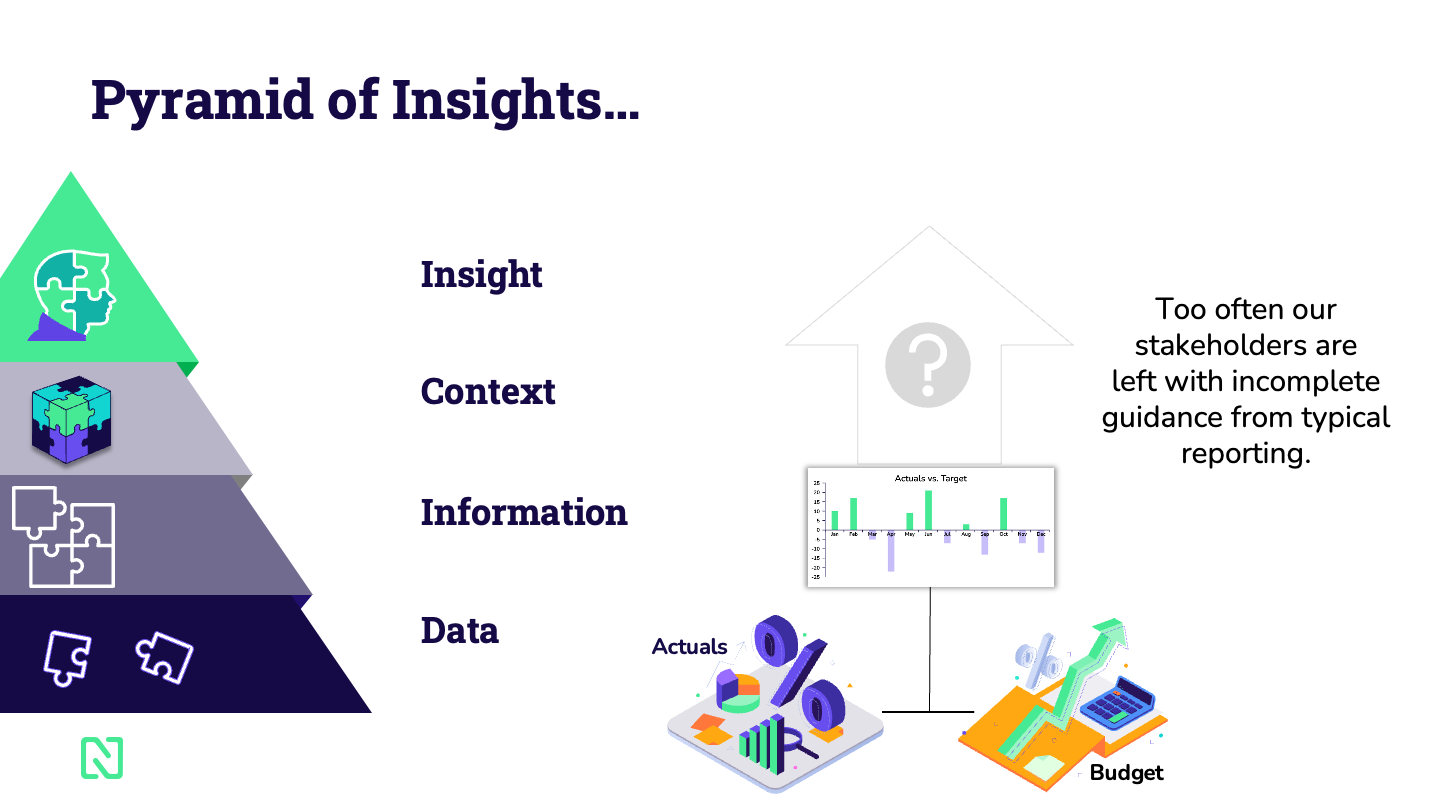

While many organizations are embracing IT financial management (ITFM) to optimize IT spending, the truth is that it isn’t a native skill set in companies today.
Even for companies that have deployed IT financial management (ITFM) software, getting the answers they need can be elusive.
The reason: ITFM is a multi-dimensional puzzle, and doing it well demands expertise in data analytics, finance, technology and strategic thinking. Teams must be equipped not just with data management expertise, but also the ability to turn data into guidance to drive strategic spending decisions.
One way to visualize this is by thinking of ITFM as a pyramid of insights, where each layer of insights rests on the foundation of earlier steps in the process. Let’s look at this in more detail, and where organizations tend to get stuck.
Download your free eBook on 6 Keys to a Winning ITFM Implementation for a roadmap to ITFM deployment success
The pyramid of insights has four layers, each with a unique purpose and each building successively on the layer beneath.
The foundation of the pyramid is data that resides in various systems across the organization. Combining these data points leads to the next layer of the pyramid, which is information. By bringing multiple data points together, you begin to form initial intelligence in the form of metrics.

The third layer of the pyramid is context. Here is where teams take information and begin to form a narrative. The pinnacle of the pyramid is insight, where data, information and context converge into decision optics.
What’s important to note here is that while software can automate the bottom two layers, the top two layers demand human expertise. Below we look at some examples of these principles in action.
Let’s say you’re looking at buying a car versus a pickup truck. At the bottom of the pyramid, you have data points such as fuel consumption and miles traveled. Combining them moves you up the pyramid and gives you a fuel efficiency metric in miles per gallon (mpg).
If you make your decision based on that metric alone, the car seems like the obvious choice at 40 mpg versus 20 mpg for the truck.

Context and insight come into play when you ask what you’re trying to do with the vehicle. Now let’s say you need to move 10 large boxes in an hour. Either vehicle can get the job done, but you’ll need 10 cars versus one truck! So, while the car is more fuel efficient, with context, the truck is clearly the right choice.
This is what happens in technology every day, as stakeholders make decisions based on initial intelligence rather than looking at the full context of the costs.
IT finance reporting often starts with comparing budget and actuals to identify variances. This is an example of how combining data points (budget and actuals) delivers information (variance), representing the bottom two layers of the pyramid.

The problem is that’s also where most financial reporting starts and ends. In reality, there can be a dozen reasons why being over budget is good, and a dozen different reasons why being under budget is bad.
When a company needs to cut costs, ITFM puts the numbers in context so they can make cuts in the right places without impacting delivery of IT. With ITFM software, companies can get to this level of insight in a single meeting, accelerating decision-making while protecting against unintended consequences of arbitrary cuts.
Where most organizations get stuck is trying to move from information to insight. As part of its acquisition of Proven FM, Nicus eliminates this challenge with a new team of experts providing data as a service and reporting as a service.
Here companies get a proven methodology for making all the pieces work together, from data management and cost modeling to reporting and decision-making guidance. Organizations have access to experts in analytics, finance and strategy, putting ITFM success within reach without being constrained by internal resources.
Data as a service provides the foundation by managing, processing and validating data inputs into the software. Over time, Nicus professionals bring in new data sources and with new services added to the cost model, continuously increase the value of information delivered.
Reporting as a service connects the dots, combining financial and operational data with decades of ITFM strategy expertise. The result: stakeholders understand what they’re looking at and what they need to do to optimize IT spending.
All data contains a story. But when businesses write the storyline based on data alone, it’s the same every time: IT is too expensive, a black box necessitating across the board cuts.
By leveraging the pyramid of insights, however, teams can learn to read between the lines and identify which levers to pull to achieve their goals without sacrificing performance.
Download your free eBook on 4 Steps to a Healthier ITFM Practice Beyond Spreadsheets to learn how to tell when it’s time to move beyond spreadsheets in ITFM